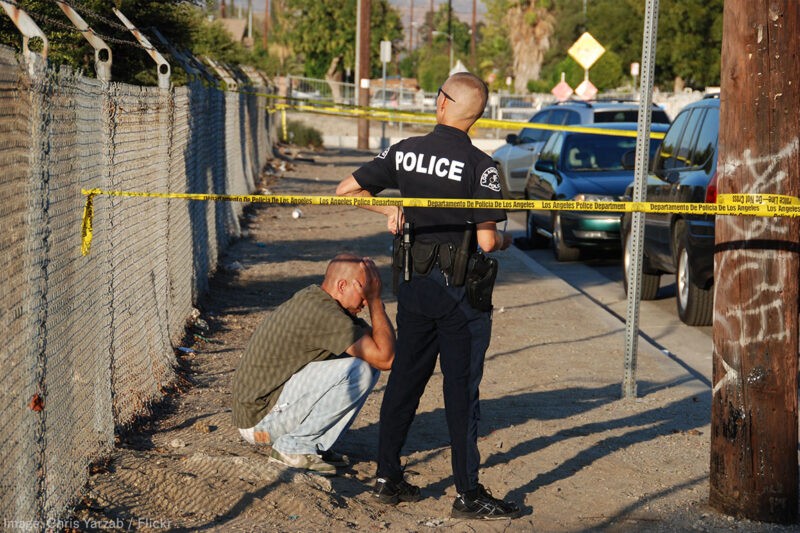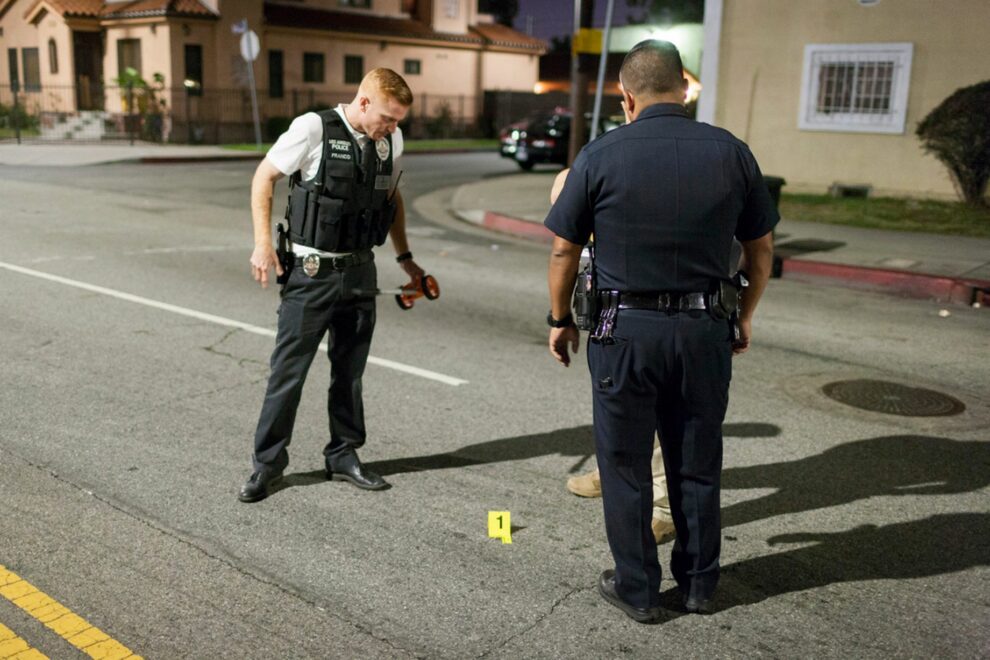In recent years, police brutality has undergone a tremendous wave of renewed public scrutiny in the United States. In wake of nationwide uprisings following the murder of George Floyd in 2020, police departments across the country have been under more scrutiny for misconduct, violence, and what activists argue is the targeting of Black and Latino communities.
In 2023, police violence remains at the forefront of the national psyche. According to the nonprofit organization Mapping Police Violence, last year at least 1,186 people were killed by law enforcement in the U.S., which it commutatively defines as any person(s)—armed or otherwise—killed by vehicles, tasers, shootings, or other physical force.
Police Violence Studies Show Mixed Findings
According to Mapping Police Violence, 39 more people were killed in 2021 than in 2022. Researchers say that last year’s tally may yet still be an undercount, as the organization continuously compiles and adds new data for the years that it tracks.
Mapping Police Violence’s data did show that killings of unarmed individuals and those in unclear circumstances were slightly down, decreasing from 232 deaths in 2021 to 219 in 2022. A trend that has also followed a general decline of reported instances in recent years.
However, police reform advocates are increasingly concerned that this trend is due to underreporting by the government itself.
According to the Washington Post, (which has also maintained its own Fatal Force Database since 2015) data collected by the Post shows that the Federal government’s own FBI database contains only about one-third of the 7,000 fatal police shootings that have occurred between 2015 and 2021.
Inconsistent Data Collection And Latinos

This general decline in documentation of police killings by the federal government itself has not only concerned police reform advocates, but those concerned about the effects of police violence on Latino communities in particular.
Latinos are the most likely to be misclassified or undefined in studies of violent and deadly police encounters. The Raza Killings Database, a collaborative project through Cal State University, San Bernardino and Latino Education and Advocacy Days (LEAD), has sought to address this matter and more accurately document the number of Latinos killed by U.S. law enforcement.
According to the Raza Killings Database, Hispanics and Latinos who are killed during interactions with law enforcement are significantly undercounted because many are often misclassified in categories such as “unknown,” “unidentified” or even “white.”
As of 2023, no other entity tracking police violence has a focus solely dedicated to accurately documenting Latino deaths at the hands of law enforcement. Likewise, differing methodologies and strategies for collecting data (such as omitting deaths from immigration and other federal officers) across different orgs has further complicated any efforts to accurately document Latino deaths during encounters with law enforcement.
Consequently, one of the primary focuses of the Raza Killings Database has been to meticulously comb through past data to create a more accurate picture of use of force against Latinos and its effects in Latino communities.
To complicate matters, Latino ethnicity is not always plainly visible, nor is it clearly defined. Since under the Federal government’s current metrics “Hispanics” can be of any race. Likewise, the Raza Killings Database also points out that a significant number of Latinos have “European” surnames. These individuals are not captured by methodologies such as surname matches, and thus not identified by this type of analysis commonly used by researchers.
In addition, killings by immigration officers, and people who die in their custody are also not counted in FBI’s official tallies. Nor are they included in independent reports such as those published by independent entities like Mapping Police Violence. Further contributing to a cycle of Latino deaths from law enforcement being undercounted and further skewing data.
Researchers Left To Fill In The Gaps
To date, the Raza Killings Database estimates that over 2,600 Latinos have died at the hands of police since 2014 according to the database’s research. And data collected for the report shows that the category of “unidentified” has grown out of proportion to other groupings and classifications as well.
Since police agencies have no standardized way of categorizing victims, Latinos as a group will most likely continue to be improperly documented. This leaves researchers of police violence left in the dark to fill in the gaps with meticulously gathered, but still incomplete data. Misclassifications and incomplete data not only warp findings but shed light on the systematic dehumanization of Latino victims of police violence that continues even after their death.
Ultimately, if there is to be transparency and accountability, it is imperative that accurate data is collected.












